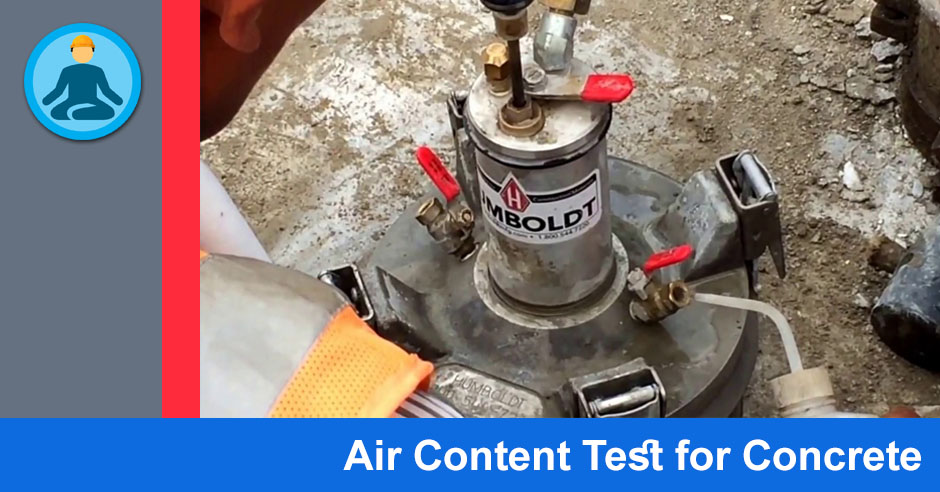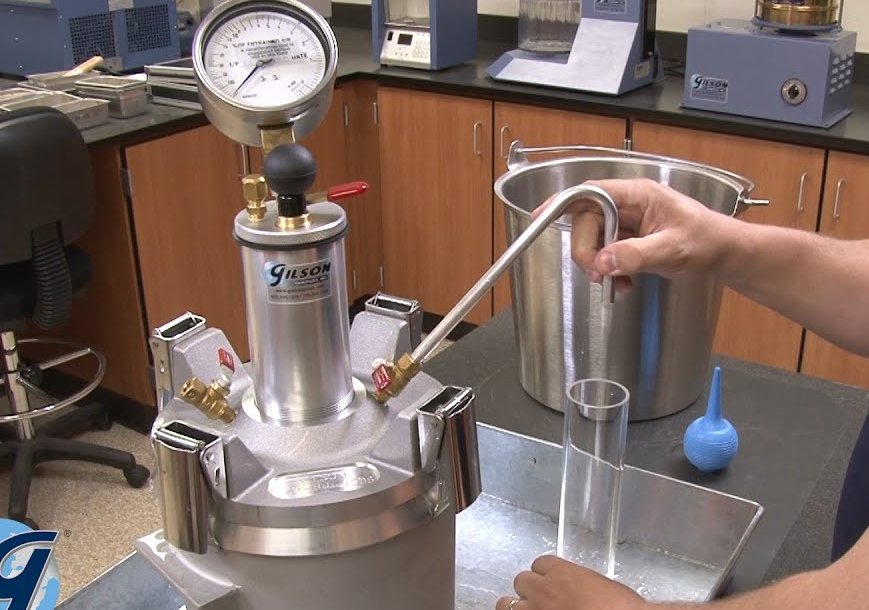Air-entrained concrete is typically specified in areas of the country where frost-related damage can occur. The measurement of air content in fresh concrete of normal density is typically performed using the pressure method (ASTM C 231). Another useful test is ASTM C 173. However, the pressure method is frequently preferred because it is relatively fast.

It is necessary to begin the test within 15 minutes after obtaining the composite sample. Procedure is as follows :
- Fill 0.25 ft3 base of the air-content test device in three equal layers.
- Rod each layer 25 times.
- After rodding, strike the outside of the base with a mallet 12 to 15 times to close any air voids.
- After completing the three equal layers, strike off the bowl flush at the top to completely fill the 0.25 ft3 volume.
- Now, it can be weighed as part of the calculation to determine the fresh concrete unit weight.
- Latch the top of the air-content test device over the base and fill the air gap between the top of the struck-off concrete and the underside of the top of air meter with water.
- The meter top is then pressurized with the built-in hand pump until zeroed out (or as calibrated).
- After a stabilization period, release the pressure in the top and read the air-void content on the dial on the top of the meter.
- Subtract the aggregate correction factor from the dial reading and report the final value.

Note : A Type B pressure meter is used to determine the air content of normal-weight concrete. The air content is read at the dial, which is calibrated for each apparatus. The aggregate correction factor (explained in ASTM C 231) must be subtracted from your reading to obtain the net air content.
Testing tip: A typical air content for concrete with a ¾-inch maximum-size aggregate is about 6%, and specified ranges in air content are typically minus 1 ½% and plus 1 ½% of the target value.
